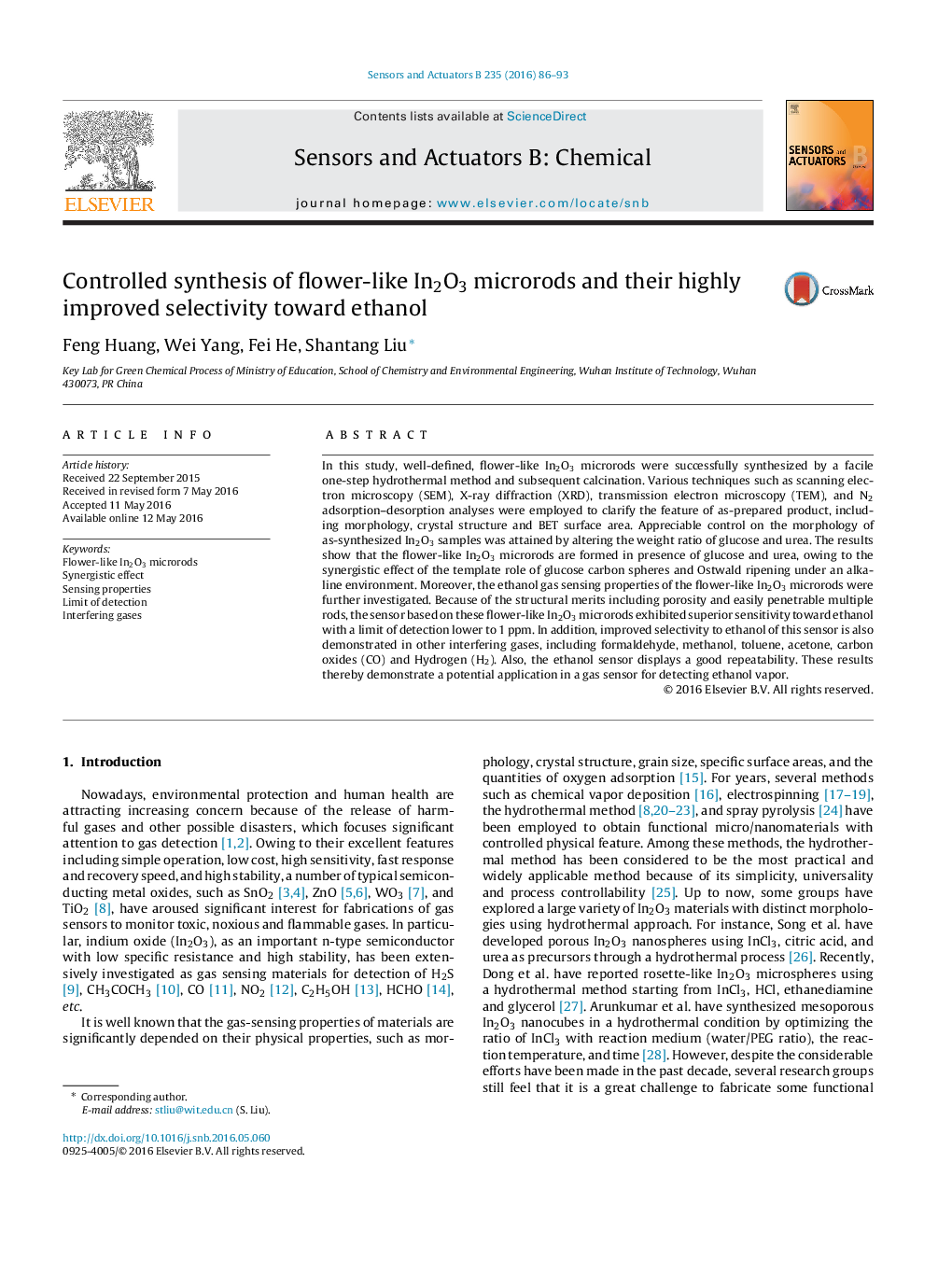| Article ID | Journal | Published Year | Pages | File Type |
|---|---|---|---|---|
| 7142878 | Sensors and Actuators B: Chemical | 2016 | 8 Pages |
Abstract
In this study, well-defined, flower-like In2O3 microrods were successfully synthesized by a facile one-step hydrothermal method and subsequent calcination. Various techniques such as scanning electron microscopy (SEM), X-ray diffraction (XRD), transmission electron microscopy (TEM), and N2 adsorption-desorption analyses were employed to clarify the feature of as-prepared product, including morphology, crystal structure and BET surface area. Appreciable control on the morphology of as-synthesized In2O3 samples was attained by altering the weight ratio of glucose and urea. The results show that the flower-like In2O3 microrods are formed in presence of glucose and urea, owing to the synergistic effect of the template role of glucose carbon spheres and Ostwald ripening under an alkaline environment. Moreover, the ethanol gas sensing properties of the flower-like In2O3 microrods were further investigated. Because of the structural merits including porosity and easily penetrable multiple rods, the sensor based on these flower-like In2O3 microrods exhibited superior sensitivity toward ethanol with a limit of detection lower to 1Â ppm. In addition, improved selectivity to ethanol of this sensor is also demonstrated in other interfering gases, including formaldehyde, methanol, toluene, acetone, carbon oxides (CO) and Hydrogen (H2). Also, the ethanol sensor displays a good repeatability. These results thereby demonstrate a potential application in a gas sensor for detecting ethanol vapor.
Related Topics
Physical Sciences and Engineering
Chemistry
Analytical Chemistry
Authors
Feng Huang, Wei Yang, Fei He, Shantang Liu,
